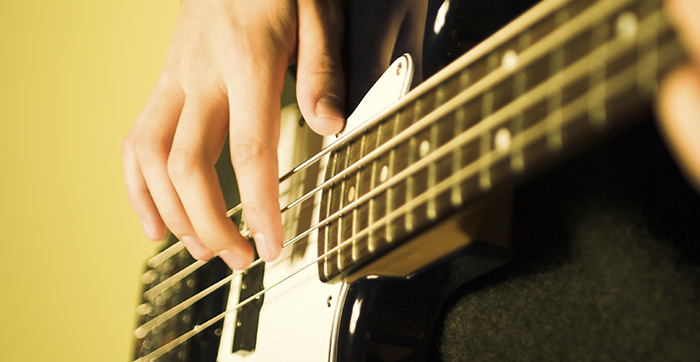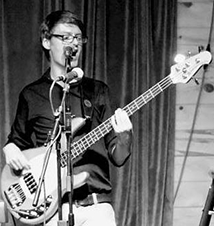
The bass player is one of the driving forces of any musical group, especially if that group is jazz combo or big band. If you’re a director who’s not a bassist, it’s not always obvious what to look and listen for in your young bassists — or how to guide them. Here are a few simple bass technique tips that I’ve found to have a big impact.
Setup
While it’s always everyone’s job to keep time, the bassist and drummer provide the rhythmic heartbeat for any jazz rhythm section. When you’re swinging, that pulse comes from the ride cymbal and the bass, which is typically walking four to a bar. So, when you’re setting up the band, make sure your bass player is located to the drummer’s right (where a right-handed drummer would place the ride cymbal). This removes any physical barriers and makes it easier for them to agree on that quarter note pulse.
The bass player’s other partner in crime is the lead trumpeter, who leads the rest of the ensemble in phrasing and swing feel. Be sure to position the trumpets closely to the rhythm section to keep things tight between sections.
Articulation
Once your bass and drums are in agreement, focus on the bass line itself. My first bass teacher once told me to imagine that every big band chart had a giant slur from the first bar to the last bar. Simply put, your bass player needs to give every quarter note its full value and connect each note in the line, even when they’re digging in. If your bassist is playing a double bass, be aware that this approach to pizzicato playing may be a little different than what they’ve previously encountered in an orchestra.
Bass Technique
In order to achieve this articulation, bassists must coordinate their hands in specific ways. For the left hand, use the tips of the finger to provide the firmest connect between the string and fingerboard or fret wire, and therefore the cleanest pitch. But be sensitive to smaller hands, which may need to make adjustments in lower positions to prevent excessive wrist bending.
At the same time, the angle and position of the right hand contribute greatly to articulation and tone production. On the double bass, fingers should be roughly parallel to the strings and near the end of the fingerboard. By contrast, on bass guitar the fingers should be more perpendicular to the string. Have your bass player experiment with resting the right thumb on the side of the fret board. While this position may be higher than they are used to in pop or Latin styles, it softens the articulation to more closely emulate the double bass. Combine this with rolling off the tone, by turning down the tone knob on the bass, to reduce some treble and round out the sound even more.
Keep it Low
Big bands fill a wide frequency range. It’s always tempting for bassists to keep climbinger higher and higher up the fingerboard. While this is not a problem in a small group setting or the woodshed, this may encroach on someone else’s tonal territory in a large ensemble. This phenomenon was once illustrated to me during a live performance of the great jazz singer Kurt Elling. While introducing the band, Elling jokingly praised his bass player’s technique. He appreciated that the bassist kept his left hand high, which kept the pitches low.
While each of these items may only make a subtle difference on its own, taken together they can make a significant difference for your young bassist and the sound of your band.
 Chad Mathis has been with MakeMusic’s Customer Success team since 2013 and holds a Master of Arts in music performance from Eastern Illinois University.
Chad Mathis has been with MakeMusic’s Customer Success team since 2013 and holds a Master of Arts in music performance from Eastern Illinois University.
His favorite yoga poses are those that are easier and less embarrassing than hauling bass gear through the middle of a crowded wedding reception.